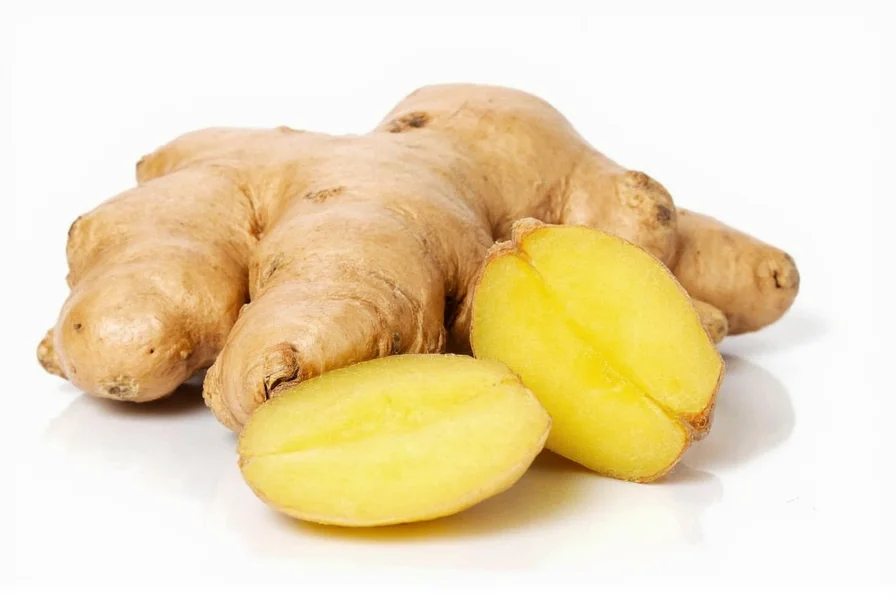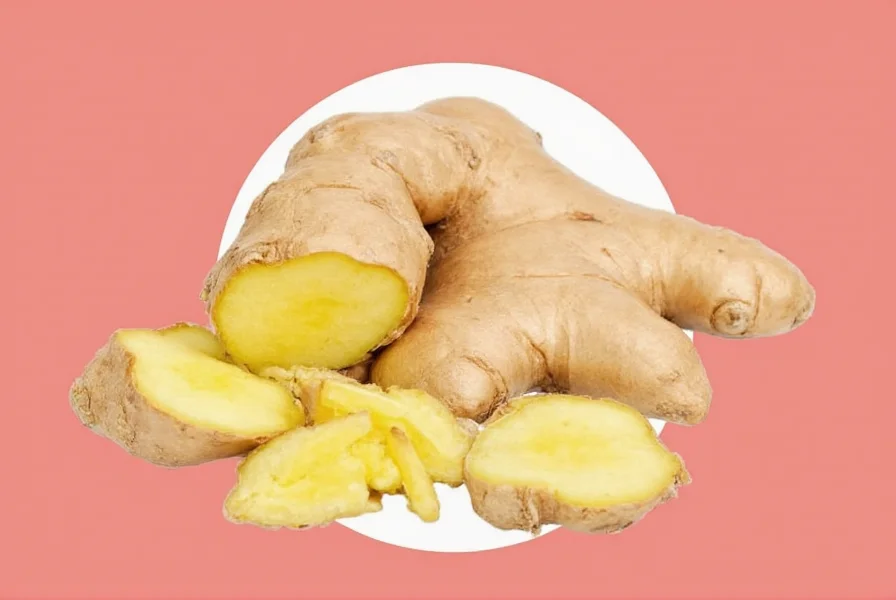Ginger isn't just a kitchen staple—it's a versatile root with a rich history in culinary and wellness traditions worldwide. Understanding how to properly consume ginger can help you maximize its potential benefits while avoiding common pitfalls. This guide explores scientifically supported methods to incorporate ginger into your daily routine safely and effectively.
Understanding Ginger Forms and Their Uses
Ginger comes in multiple forms, each with unique properties and best-use scenarios. Choosing the right form depends on your intended purpose, whether for culinary enjoyment, digestive support, or general wellness.
| Ginger Form | Best For | Shelf Life |
|---|---|---|
| Fresh ginger root | Cooking, juicing, tea | 3-4 weeks refrigerated |
| Dried ginger slices | Tea, decoctions | 6-12 months |
| Ginger powder | Baking, supplements | 2-3 years |
| Ginger extract/tincture | Concentrated use | 3-5 years |
7 Effective Ways to Consume Ginger Daily
1. Fresh Ginger in Culinary Applications
Using fresh ginger root provides the most natural gingerol compounds. Peel and mince or grate ginger to add to stir-fries, soups, and marinades. For maximum benefit, add ginger during the last 5-10 minutes of cooking to preserve active compounds that degrade with prolonged heat exposure. Many people searching for how to use fresh ginger in cooking find this timing crucial for flavor and potential benefits.

2. Ginger Tea Preparation
One of the most popular methods for consuming ginger is through tea. To prepare:
- Slice 1-2 inches of fresh ginger root
- Boil in 2-3 cups of water for 10-15 minutes
- Strain and add lemon or honey to taste
This simple ginger tea recipe for beginners provides a soothing beverage that many find helpful before meals for digestive support. For stronger tea, crush the ginger before boiling to release more compounds.
3. Ginger Supplements and Dosage Guidelines
Ginger supplements offer standardized dosing, which addresses the common question of how much ginger should I take daily. Most clinical studies use 1-2 grams of ginger extract daily, divided into multiple doses. Always check with your healthcare provider before starting any new supplement regimen, especially if you take blood thinners or have gallstone issues.
4. Powdered Ginger in Baking and Beverages
Ginger powder works well in baked goods, smoothies, and spice blends. When substituting fresh ginger with powder, use this ratio: 1 tablespoon fresh grated ginger equals 1/4 teaspoon ginger powder. This conversion helps those wondering how to substitute fresh ginger with powder in recipes without compromising flavor.
5. Pickled Ginger (Gari)
Commonly served with sushi, pickled ginger offers a milder flavor profile. To make at home, thinly slice fresh ginger and soak in a mixture of rice vinegar, sugar, and salt for several days. This how to make pickled ginger at home method creates a probiotic-rich condiment that many enjoy between meals.
6. Ginger Shots and Juices
For concentrated consumption, ginger shots (1-2 ounces of pure ginger juice) have gained popularity. Juice fresh ginger root alone or combine with lemon, apple, or carrot. Start with small amounts (1/4 ounce) if you're new to ginger shots, as the potency can be intense. This addresses the frequent query about how to make ginger shots for immunity.
7. Candied Ginger for On-the-Go Consumption
Candied ginger provides a convenient way to consume ginger throughout the day. Look for options with minimal added sugar, or make your own by simmering sliced ginger in sugar syrup until tender. Many people searching for how to eat ginger when traveling find this method practical for maintaining consistent intake.
Recommended Daily Intake and Timing
For general wellness purposes, most research suggests 1-3 grams of ginger per day is appropriate for adults. Divide this amount into multiple servings rather than consuming it all at once. Consider these timing strategies:
- Before meals: 30 minutes prior to support digestion
- Morning: In tea to support morning wellness routines
- Before exercise: Some find ginger helpful pre-workout
- Evening: In moderation, as large amounts may affect sleep for some individuals
Safety Considerations and Potential Interactions
While ginger is generally safe, certain considerations apply:
- Pregnant women should consult healthcare providers (limit to 1g/day)
- Those on blood thinners should monitor intake
- Excessive consumption (over 4g daily) may cause heartburn or mouth irritation
- Stop using ginger at least 2 weeks before surgery
People often search for is it safe to consume ginger daily—moderation is key, and most adults tolerate 1-3 grams daily without issues.
Creative Ways to Incorporate Ginger Into Your Diet
Beyond traditional uses, try these innovative approaches:
- Add grated ginger to oatmeal or yogurt
- Blend into salad dressings with citrus and olive oil
- Mix powdered ginger into homemade energy balls
- Add to fruit smoothies for a spicy kick
- Infuse in hot water with turmeric for golden milk

When to Consult a Healthcare Professional
While ginger is generally safe for most people, consult a healthcare provider if you have:
- Blood clotting disorders
- Gallstones
- Diabetes (ginger may affect blood sugar)
- Upcoming surgery
- Pregnancy beyond the first trimester
Those searching for how to consume ginger with medical conditions should prioritize professional medical advice over general recommendations.
Frequently Asked Questions
What's the best time of day to consume ginger?
Morning consumption, particularly in tea form, works well for most people as it can support digestion throughout the day. Many find taking ginger 30 minutes before meals provides optimal digestive benefits. However, avoid large amounts close to bedtime as ginger's stimulating properties may interfere with sleep for some individuals.
How much fresh ginger equals powdered ginger in recipes?
The standard conversion is 1 tablespoon of freshly grated ginger equals 1/4 teaspoon of ground ginger powder. This significant difference exists because the drying process concentrates ginger's compounds. When learning how to substitute ginger forms in recipes, remember that fresh ginger provides a brighter, more pungent flavor while powdered ginger offers deeper, warmer notes.
Can I consume too much ginger in one day?
Yes, consuming more than 4 grams of ginger daily may cause side effects like heartburn, diarrhea, or mouth irritation for some people. The recommended daily limit for most adults is 1-3 grams. Those searching for how much ginger is too much should note that individual tolerance varies, and it's best to start with smaller amounts and gradually increase as needed.
Is raw ginger better than cooked ginger?
Both forms offer benefits, but they differ in compound composition. Raw ginger contains higher levels of gingerol, while cooked ginger develops more zingerone, which has different properties. For those exploring how to maximize ginger's potential benefits, using both raw and cooked forms throughout the week may provide the broadest range of compounds. Add raw ginger to smoothies or juices, and cooked ginger to soups and stir-fries.
How long does it take to feel ginger's effects?
The timeframe varies depending on the purpose and form of consumption. For digestive support, many notice effects within 30-60 minutes of consumption. When addressing the common question of how quickly ginger works for nausea, studies show effects can begin within 20 minutes. Regular consumption over weeks may be needed to notice more subtle wellness benefits. Individual responses vary based on metabolism and overall health.










 浙公网安备
33010002000092号
浙公网安备
33010002000092号 浙B2-20120091-4
浙B2-20120091-4